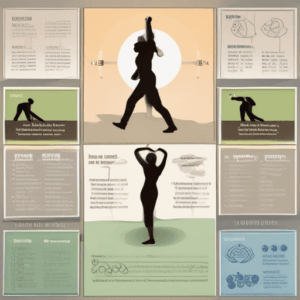Have you ever had a day where everything seems to be coming apart? Maybe it’s a heated argument, a snarky comment from a coworker, or even just a small inconvenience that somehow spirals out of control. Before you know it, frustration takes over, and suddenly, you’re snapping at everyone or retreating into your own bubble of silence. Sound familiar? Yeah, we’ve all been there.
Managing emotions can feel like an uphill battle, right? One minute you’re calm and collected, and the next, you’re overwhelmed by anger, sadness, or anxiety. It’s as if our emotions have a mind of their own, pulling the strings while we helplessly watch. But here’s that we are not alone. We’re all human, and our emotions can be unpredictable and messy at times.
Why is this so important? Since feelings affect all aspect of our lives, including our relationships, choices, and even our mental and physical health, Imagine being able to handle stressful situations without breaking a sweat or expressing your feelings in a way that strengthens your connections with others. That’s the strength that comes with controlling your emotions.
Control Your Emotions in 2025
In this blog, we’re diving into the 10 powerful triggers that will help you do just that. Ready to take back control and show your emotions who’s boss? Let’s get started
1.Deep Breathing: Your Instant Calm Button
Have you ever felt like your emotions are running wild? Maybe your heart is racing, your chest feels tight, or your thoughts are all over the place. That’s your body reacting to stress, and it’s screaming for relief. Luckily, there’s a simple yet powerful tool to calm emotions in moments like these: deep breathing.
Deep breathing isn’t just about taking slow breaths; it’s a scientifically proven way to activate your parasympathetic nervous system, which helps your body shift from “fight or flight” to a state of relaxation. When stress hits, your sympathetic nervous system amps up your heart rate and sends stress hormones coursing through your veins. But deep, intentional breaths can quickly counteract that, signaling to your brain that it’s time to chill.
Breathing Exercises to Try
Here are two simple but effective breathing techniques you can use anytime to manage emotions:
- 4-7-8 Breathing Technique
- Breathe deeply through your nose for four counts.
- Hold your breath and count to seven.
- Take a steady, deep breath out of your mouth for 8 counts.
- Repeat this cycle 4-5 times to instantly calm your mind and body.
Both of these exercises are easy to remember and can be done anywhere—whether you’re in the middle of a stressful meeting, stuck in traffic, or simply overwhelmed at home.
By incorporating deep breathing techniques into your daily routine, you’ll not only calm your emotions in the moment but also build long-term emotional resilience. So, next time life throws a curveball, take a deep breath and remind yourself—you’ve got this.
2. Positive Self-Talk: Flip the Script

The majority of us are our own worst critics, let us face it. When you make a mistake at work, your mind immediately concludes that you are a complete failure. Alternatively, you may notice yourself in the mirror and think, “Ugh, why can’t I look better?” Sound familiar? That inner dialogue, also known as self-talk, plays a massive role in shaping your emotions and mindset. The problem? Negative self-talk can drag you down faster than a sinking ship.
By practicing positive self-talk, you can flip the script and build emotional resilience. It’s like having a personal cheerleader in your head, reminding you that you’re capable, strong, and deserving of happiness.
Write them on sticky notes, set reminders on your phone, or say them out loud in front of a mirror. Your future self will appreciate it, even though it may feel awkward at first.
By practicing positive self-talk, you’re not just changing the way you speak to yourself; you’re transforming your entire mindset. So, next time you catch that inner critic chiming in, pause and flip the script. You’re stronger than you think, and with the right mindset, there’s nothing you can’t handle.
3.Get Moving: Exercise Those Emotions Away
You know that heavy, sluggish feeling that settles in when stress or sadness takes over? It’s like your body and mind are stuck in a fog. Here’s the antidote: exercise. Whether it’s a brisk walk, a quick dance session, or a sweaty workout, physical activity is like hitting the refresh button for your emotions.

When you exercise, your brain gets a boost of feel-good chemicals like endorphins and dopamine. These natural mood lifters work wonders in reducing stress, easing anxiety, and even combating mild depression. Plus, getting your body moving helps release built-up tension, giving you a sense of calm and clarity. Think of it as shaking off emotional clutter and making room for peace of mind.
And it’s not just about the instant relief—regular physical activity builds long-term emotional resilience. It helps regulate your stress response, improves sleep, and boosts self-esteem, making you better equipped to handle life’s ups and downs.
Breathe deeply, step outside, and follow your feet. Walking for even ten minutes can help you decompress and reduce stress. If you discover a picturesque route, bonus points. Put on your favourite playlist and dance it out in your living room. It’s fun, energizing, and a great way to release pent-up emotions. Feeling tense? Yoga combines gentle movement with deep breathing, helping you relax both physically and mentally. Even a few simple stretches can do the trick. Whether it’s jumping jacks, squats, or a short online workout video, just five minutes of activity can give your mood a quick boost. Pick up a shadowbox, a punching bag, or maybe a cushion too. It is a healthy approach to vent your anger and come away feeling lighter.
4.Visualization: Your Happy Place Awaits

Ever feel like you need an escape from the chaos around you? That’s where visualization techniques come in. Visualization, or mental imagery, is like a mini-vacation for your mind. By creating calming and positive images in your head, you can shift your focus away from stress and bring your emotions back under control.
When life feels overwhelming, your brain often gets stuck in a loop of negative thoughts and emotions. Visualization helps break that cycle by redirecting your mind to a peaceful or empowering mental image. It activates the same neural pathways as if you were actually experiencing the scene, which triggers a relaxation response. This can lower your stress levels, ease tension, and help you regain emotional balance.
You can use visualization technique whenever you need a quick emotional reset. Whether it’s during a stressful workday or before bed to unwind, it’s a simple yet powerful tool to reduce stress and regain control over your emotions. So, take a deep breath, close your eyes, and let your happy place work its magic.
5.Journaling: Let It All Out
Sometimes putting feelings on paper is the greatest way to process them. Journaling for emotions offers a safe space to release stress, gain emotional clarity, and heal. It helps you identify emotional triggers, regulate feelings, and even find solutions to challenges.
Benefits of Journaling
- Helps relieve stress and anxiety by letting go of suppressed emotions.
- Promotes self-awareness and understanding of emotional patterns.
- Supports healing by offering a space to reflect and let go.
How to Start Journaling
- Pick your tool: Notebook, app, or anything you like.
- Set aside time: Just 5-10 minutes daily.
- Use prompts: “What am I feeling right now?” or “What’s on my mind?”
- Write freely: No grammar rules—just let it flow.
- Reflect: Revisit entries to track growth and gain insights.
Start small, be honest, and let journaling guide you to emotional balance. Grab a pen, and let it all out
6.Set Boundaries: Protect Your Peace
Ever feel drained from constantly saying “yes” to everyone or overextending yourself? That’s a recipe for emotional burnout. Setting boundaries isn’t selfish—it’s essential for maintaining your emotional health and ensuring you prioritize your own well-being. Boundaries protect your peace by helping you manage your energy, reduce stress, and foster healthier relationships.

Boundaries act as guidelines for how you allow others to treat you and how much of your time and energy you’re willing to give. Without clear boundaries, you risk feeling overwhelmed, resentful, or taken for granted. Setting limits enables you to honor your own needs, preventing emotional exhaustion and promoting a healthier, more balanced life.
Kindly turn down requests that feel overwhelming: “I appreciate you asking, but I’m really busy at the moment and can’t take it on right now.”
Schedule “me time” and stick to it. Let others know when you’re unavailable, like turning off notifications after work.
Avoid taking on others’ emotional baggage. If a conversation feels too draining, say, “I care about you, but I can’t discuss this right now.”
Let people know your limits: “I’m happy to help, but I need at least a day’s notice.
Stop checking emails after hours and set clear working hours: “I’ll respond to this during office hours tomorrow.”
Related:-Reignite Your Relationship
7. Mindfulness: Stay in the Now
In a world full of distractions, it’s easy to get caught up in the chaos of overthinking the past or worrying about the future. That’s where mindfulness techniques come in—a proven way to anchor yourself in the present moment and regain emotional control.
You can learn to observe your thoughts and feelings objectively by practicing mindfulness. Instead of reacting impulsively, you learn to pause, acknowledge your feelings, and respond calmly. This practice helps reduce anxiety, as it shifts your focus from “what if” scenarios to what’s happening right now. By staying present, you can better manage emotional triggers and cultivate a sense of peace.
- Body Scan: Close your eyes and bring your attention to different parts of your body, starting from your toes and working upward. Notice any tension and consciously relax.
- Deep Breathing:Take a deep breath via your nose, hold it for a few seconds, and then gently release it through your mouth.
- Exercise for the Five Senses: List five objects you can see, four that you can touch, three that you can hear, two that you can smell, and one that you can taste. This little exercise helps you return to the present moment.
- Mindful Walking: Walking with mindfulness involves focusing on the sounds surrounding you, the feel of your feet hitting the floor, and each stride you take.
By practicing mindfulness regularly, you’ll not only calm your mind but also build emotional resilience, making it easier to handle life’s challenges.
8. Laugh It Out: Find the Humour
Have you ever noticed how instantly a good laugh improves your mood? That’s no coincidence—laughter therapy has real benefits for your emotional health. The natural “feel-good” chemicals called endorphins are released when you laugh, and they can help lower stress and improve your mood in general.
Laughter isn’t just a reaction; it’s a form of exercise for your brain and body. It reduces cortisol levels (stress hormones), improves blood circulation, and relaxes your muscles. Regular laughter even enhances your immune system and promotes mental clarity, helping you face tough situations with a lighter heart.
- Watch Comedies: Whether it’s a stand-up special or a funny movie, make time to enjoy light hearted entertainment.
- Share Jokes with Friends: Humour is contagious—swap jokes or funny stories to spark laughter in your social circle.
- Follow Funny Content: Subscribe to humour-based social media accounts for daily laughs.
- Laugh at Yourself: Don’t take life too seriously! Learn to find humour in your own quirks and mishaps.
- Enrol in a Yoga Class for Laughter: Indeed, it does exist, These classes combine breathing exercises with voluntary laughter, which soon turns genuine.
Make laughter a daily habit, and you’ll find it’s one of the simplest ways to reduce stress and keep your spirits high.
Related;-Laugh-Out-Loud
9.Connect with Others: You’re Not Alone
When emotions run high, it’s easy to feel isolated and overwhelmed. But remember, you don’t have to face everything on your own. Building strong social connections and seeking emotional support are essential for maintaining mental and emotional health.
Talking to someone you trust—a friend, family member, or therapist—can provide much-needed relief. Sharing your thoughts and feelings not only helps you process emotions but also gives you a fresh perspective. Studies show that talk therapy and regular social interactions reduce feelings of loneliness, improve self-esteem, and boost emotional resilience.
- Reach Out to Trusted People: Call or meet up with friends or family members who understand and support you. Don’t hesitate to express your needs—people often want to help but don’t know how unless you tell them.
- Join a Support Group: Whether online or in-person, connecting with others who share similar experiences can help you feel less alone.
- Practice Active Listening: Relationships thrive when communication is two-way. Be present and genuinely listen when others share their feelings—it strengthens mutual trust.
- Seek Professional Help: If your emotions feel too heavy to manage, talking to a licensed therapist can provide guidance and coping tools.
By building a strong support system, you’ll be better equipped to face life’s challenges with confidence and strength.
10.Practice Gratitude: Shift Your Focus
It’s easy to get caught up in what’s wrong in life, especially during tough times. But what if you could shift your focus to what’s going right? Practicing gratitude is a simple yet powerful way to cultivate positive emotions and bring a sense of emotional balance into your life. Gratitude helps you appreciate the little things, turning even the most ordinary moments into sources of joy.
Gratitude isn’t just a feel-good practice—it has real, measurable effects on your brain. When you focus on what you’re thankful for, your brain releases dopamine and serotonin, the chemicals responsible for happiness and well-being. Over time, regular gratitude practice strengthens neural pathways associated with positivity, making it easier to focus on the good in life. This rewiring reduces stress, enhances resilience, and boosts overall emotional health.
Daily Gratitude Exercise
To add thankfulness to your everyday routine, try this easy exercise:
- Set Aside 5 Minutes
Take a few moments at the start or end of your day to reflect on what you’re grateful for. - List Three Things
Write down three specific things you appreciate—big or small. It could be as simple as enjoying a delicious meal, receiving a kind message, or having a comfortable place to rest. - Reflect on Why They Matter
For each item on your list, think about why it’s meaningful to you. This deepens the impact of the practice. - Express Your Gratitude
Whenever possible, share your gratitude with others. Send a thank-you note, compliment someone, or simply say, “I appreciate you.” - Repeat Daily
Consistency is the key to experiencing the full benefits of thankfulness. When you make it a habit, you will notice a change in your emotions and perspective towards optimism.
By practicing gratitude regularly, you’ll not only rewire your brain but also improve your emotional well-being, making it easier to face life’s challenges with a sense of peace and optimism.
The good news? You can regain control. It’s not about suppressing your feelings or pretending they don’t exist—it’s about understanding and working with them. That’s where emotional triggers come in. By identifying and mastering these triggers, you’ll unlock a new level of self-awareness and emotional control.

